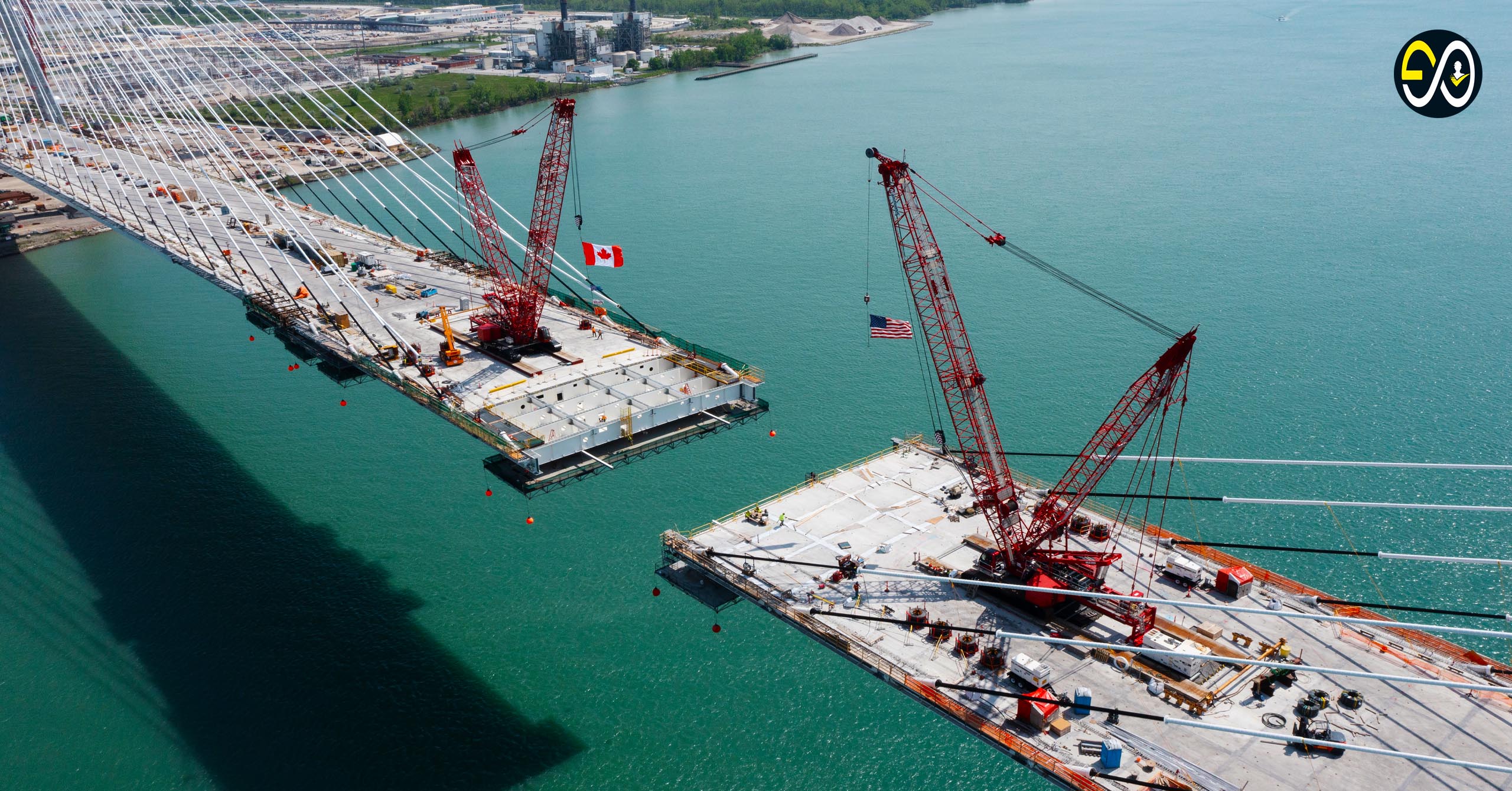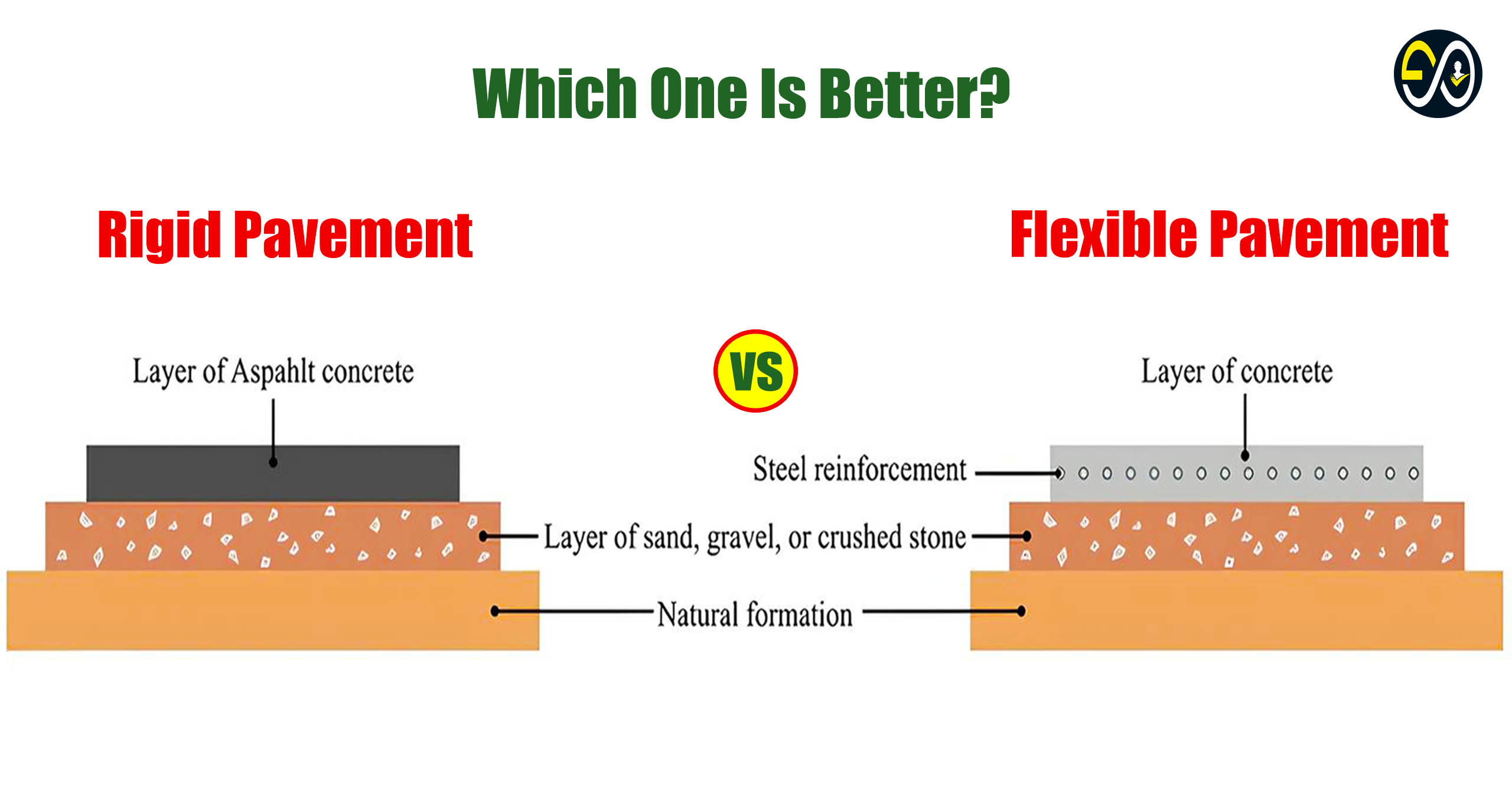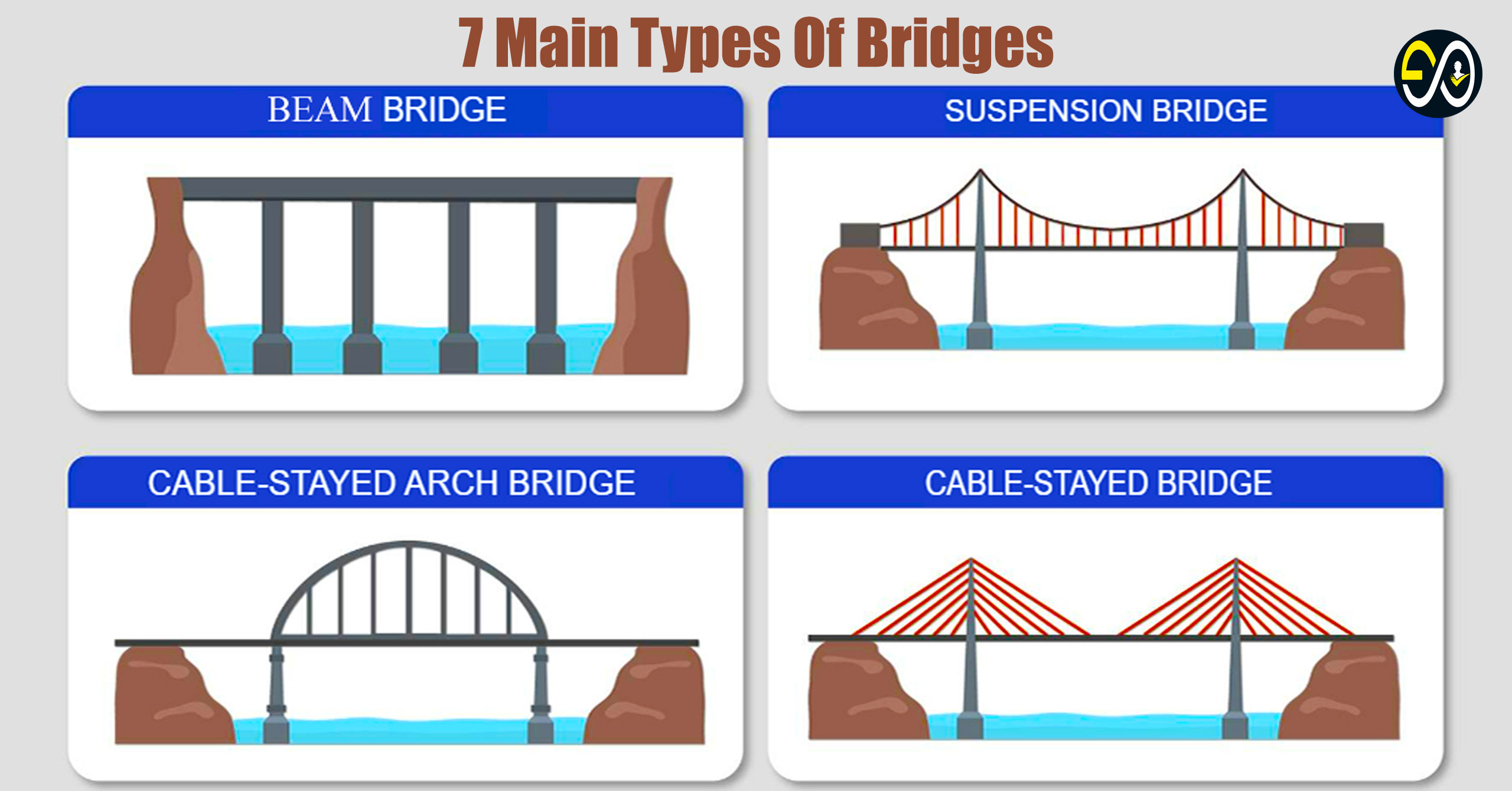
Bridges have been essential to human civilization for thousands of years, providing vital connections across rivers, valleys, and other obstacles. There are numerous types of bridges, each designed to meet specific engineering challenges. In this article, we will explore the 7 main types of bridges, focusing on their structure, function, and key characteristics.
1. Truss Bridge
Table of Contents
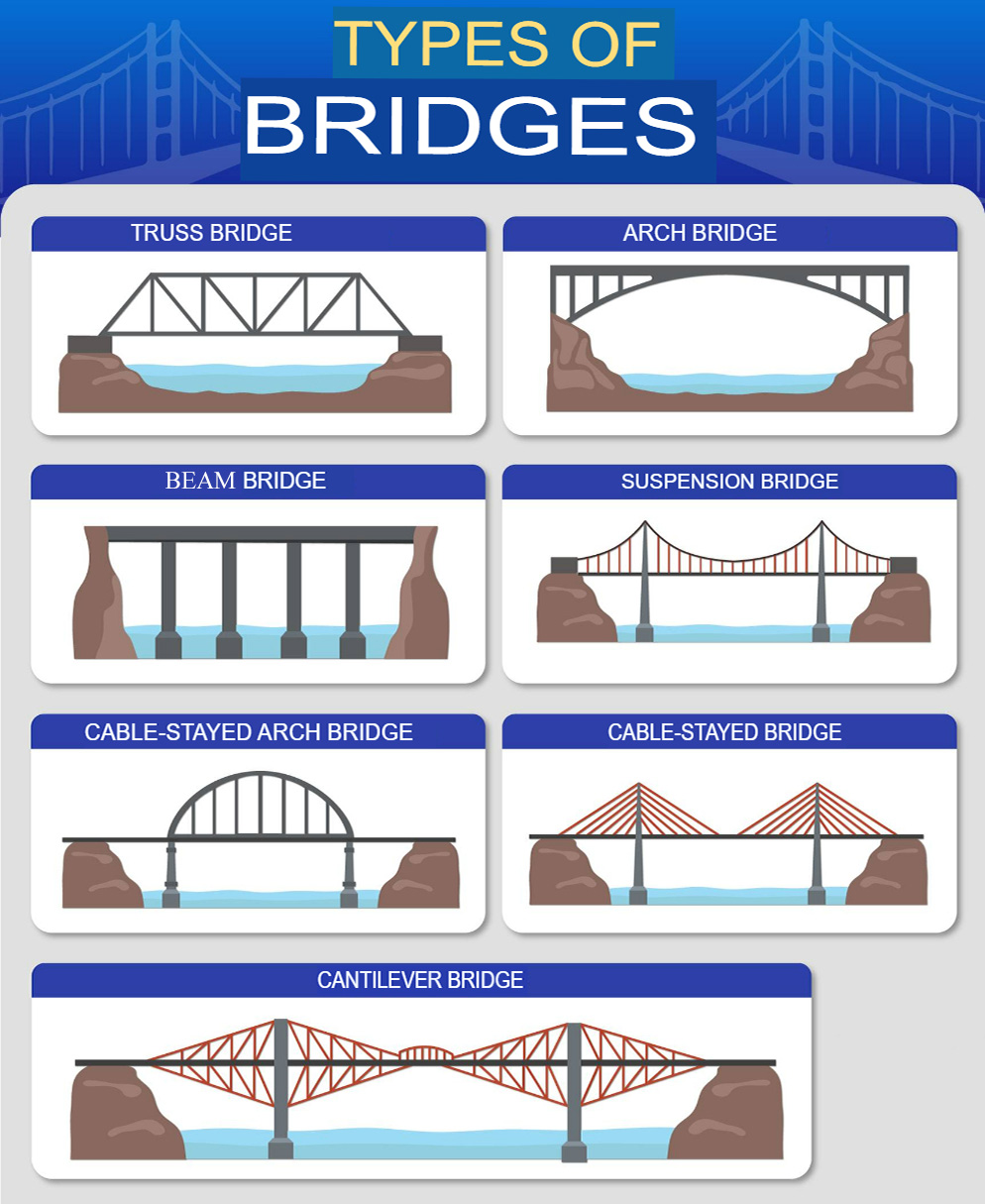
1. Truss Bridge
A truss bridge is one of the most common and effective types of bridges. It uses a series of interconnected triangles, or trusses, to distribute weight evenly across the structure. This design allows truss bridges to handle heavy loads while maintaining structural stability.
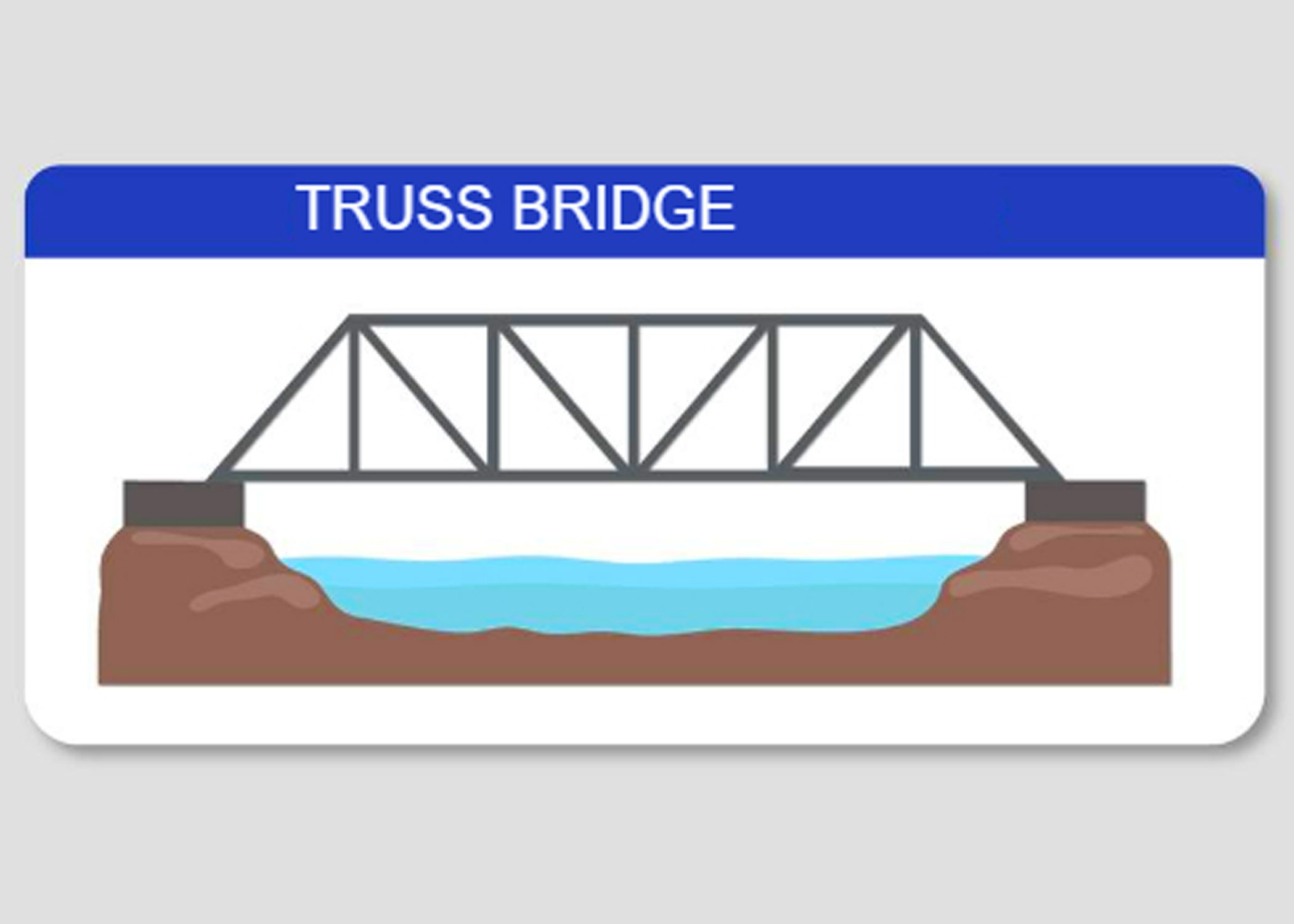
Design and Structure
Truss bridges are typically composed of steel or timber. The trusses create a rigid framework that resists bending and twisting, making these bridges ideal for spanning long distances. There are various types of truss designs, including Pratt, Howe, and Warren trusses. Each design has its unique arrangement of diagonal and vertical members, which optimize load distribution.
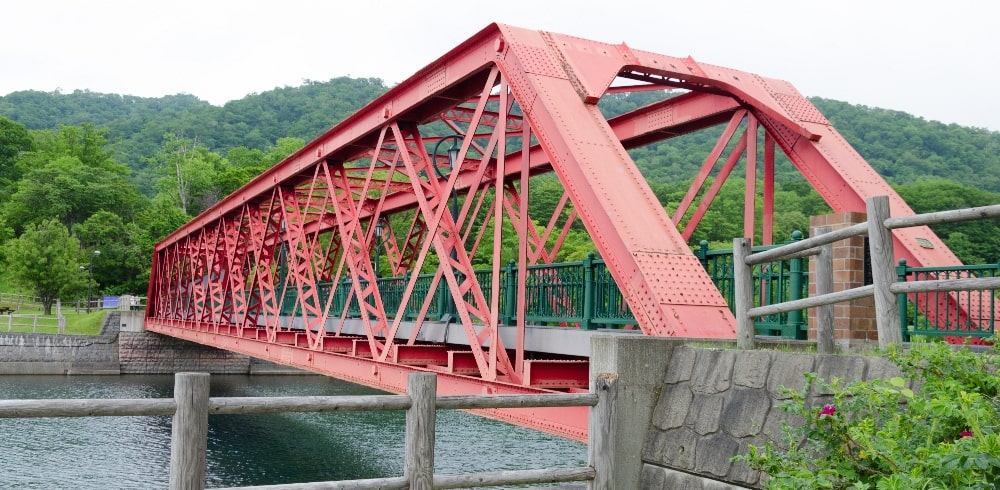
Applications
Truss bridges are widely used in railway systems, highways, and pedestrian walkways. Their ability to support substantial weight makes them ideal for heavy traffic and cargo transportation. The simplicity of their design also allows for cost-effective construction and maintenance.
2. Arch Bridge
The arch bridge is one of the oldest bridge designs, dating back to ancient civilizations. Its defining feature is the arch, a curved structure that transfers weight from the center of the bridge down to its supports, known as abutments.
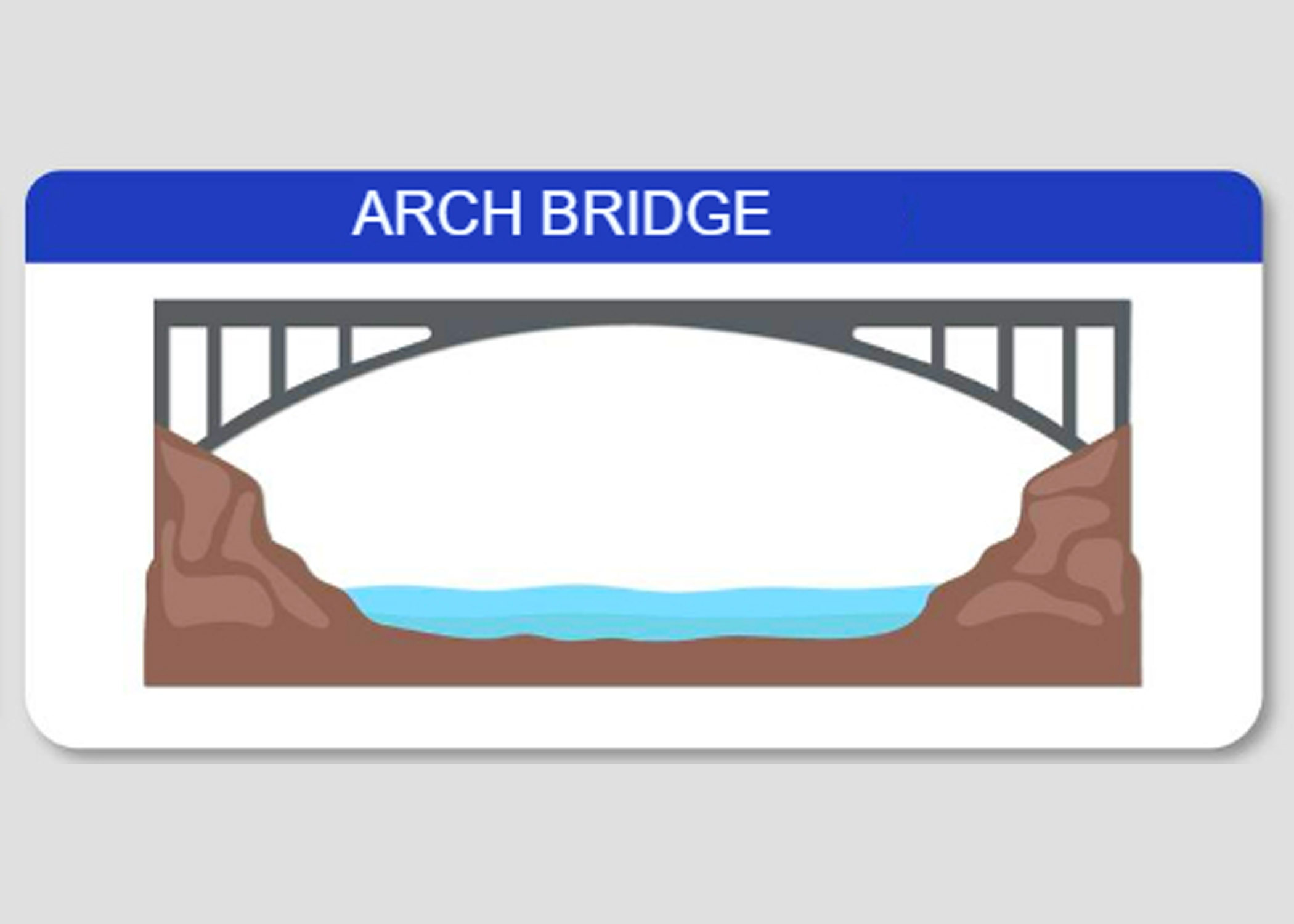
Design and Structure
Arch bridges are typically constructed from stone, concrete, or steel. The arch design naturally distributes compressive forces, making these bridges incredibly strong and durable. Roman aqueducts are prime examples of ancient arch bridges that have withstood the test of time. Modern arch bridges, such as the Sydney Harbour Bridge, often incorporate steel to allow for longer spans and increased load capacity.
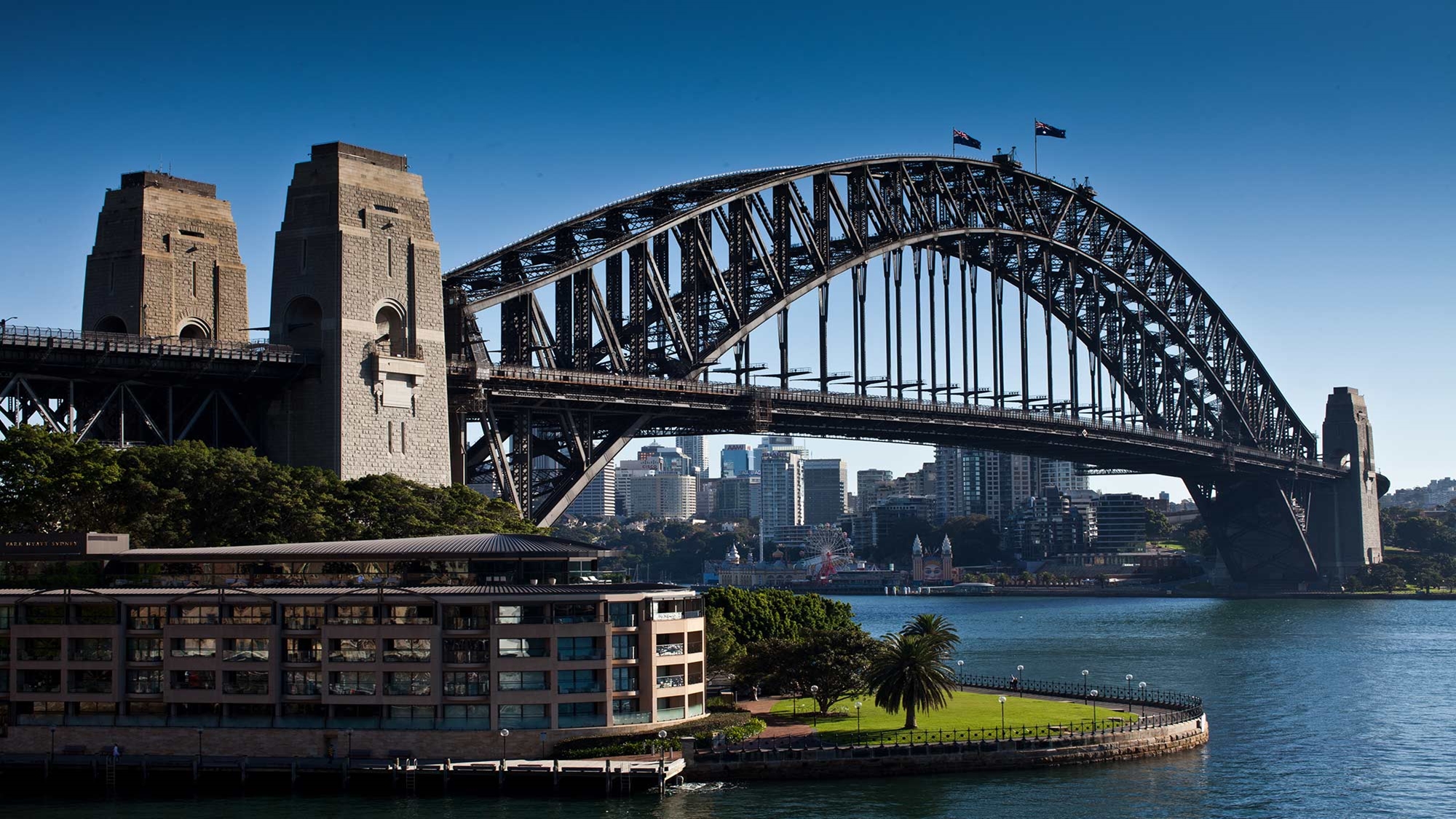
Applications
Arch bridges are ideal for spanning deep valleys and rivers. They are often used in mountainous regions where the terrain presents significant challenges. Their aesthetic appeal also makes them popular in urban areas, where they can serve as both functional infrastructure and iconic landmarks.
3. Beam Bridge
The beam bridge is the simplest type of bridge, consisting of a horizontal beam supported at each end by piers or supports. This straightforward design is commonly used for short spans and is one of the most cost-effective bridge types.
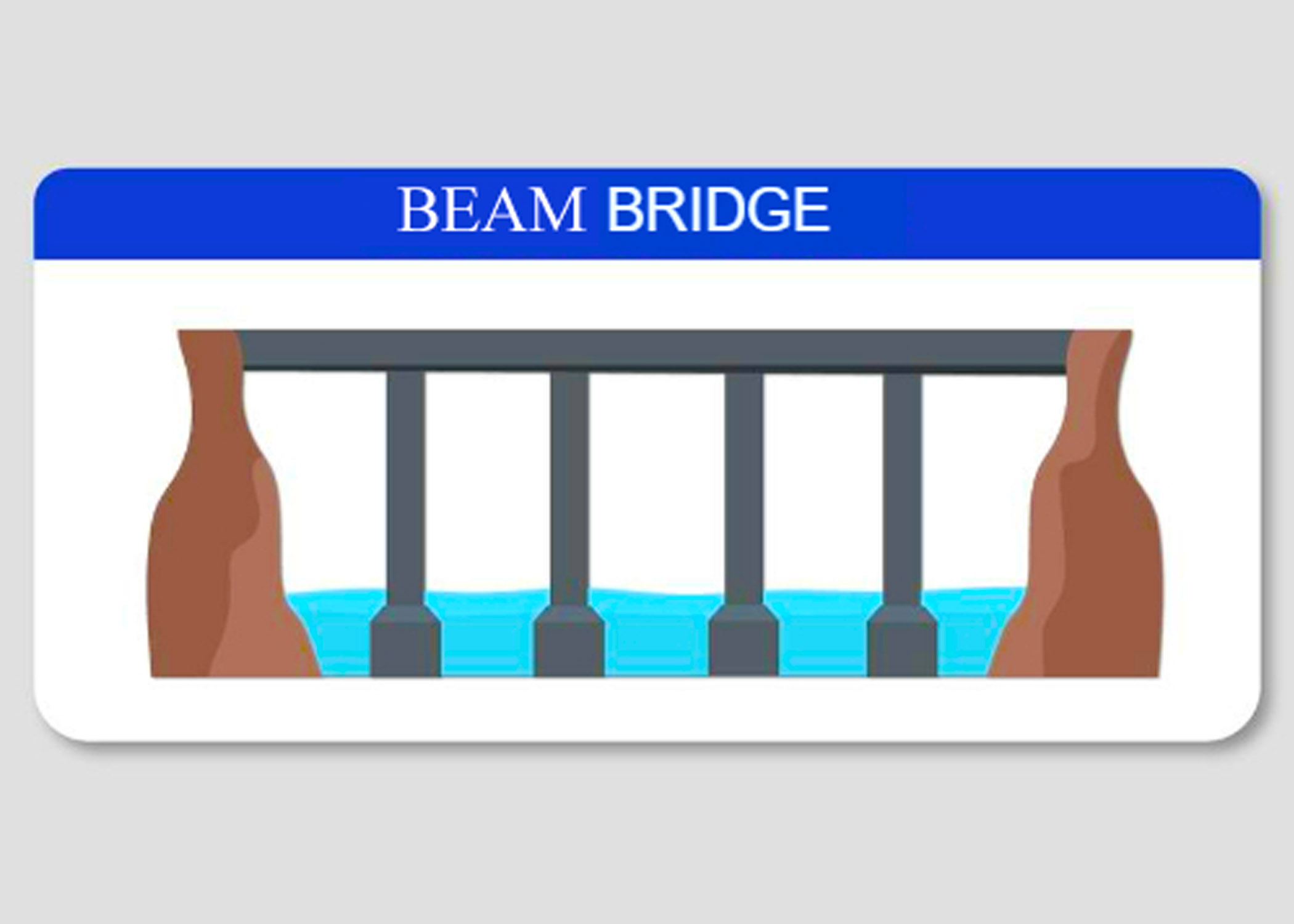
Design and Structure
Beam bridges can be made from a variety of materials, including wood, concrete, and steel. The load on a beam bridge is transferred directly to the supports, making it a practical solution for short distances. I-beams and box girders are commonly used in the construction of modern beam bridges, as they provide enhanced strength and stability.
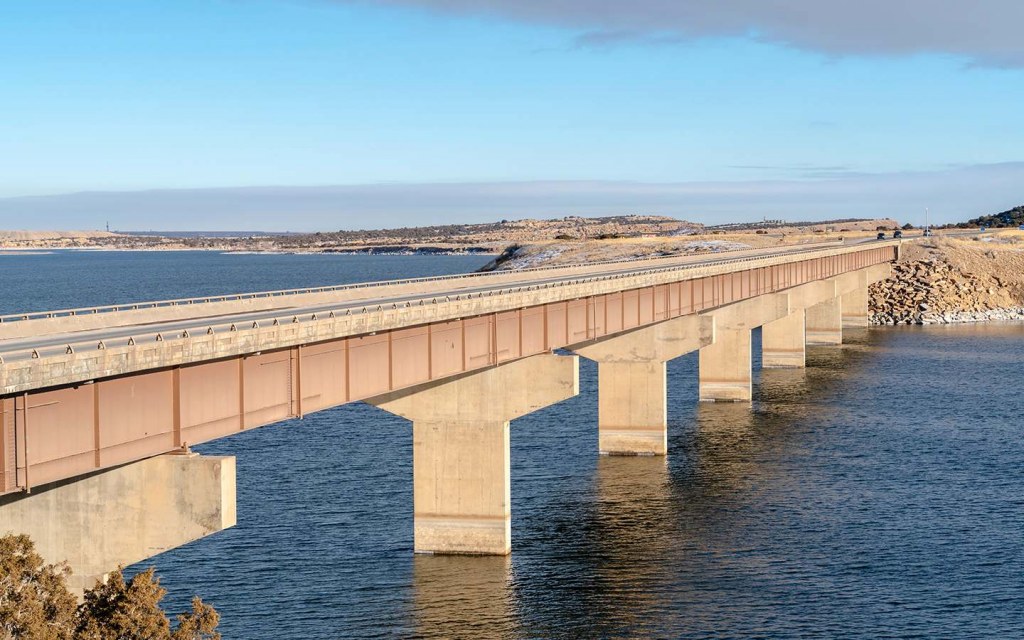
Applications
Beam bridges are commonly used for pedestrian walkways, small roadways, and overpasses. Their simplicity and low cost make them an attractive option for many applications. However, beam bridges are not well-suited for long spans, as they require additional support to prevent sagging.
4. Suspension Bridge
The suspension bridge is one of the most visually striking types of bridges. It uses cables suspended from tall towers to support the bridge deck. This design allows for long spans and the ability to accommodate heavy loads.
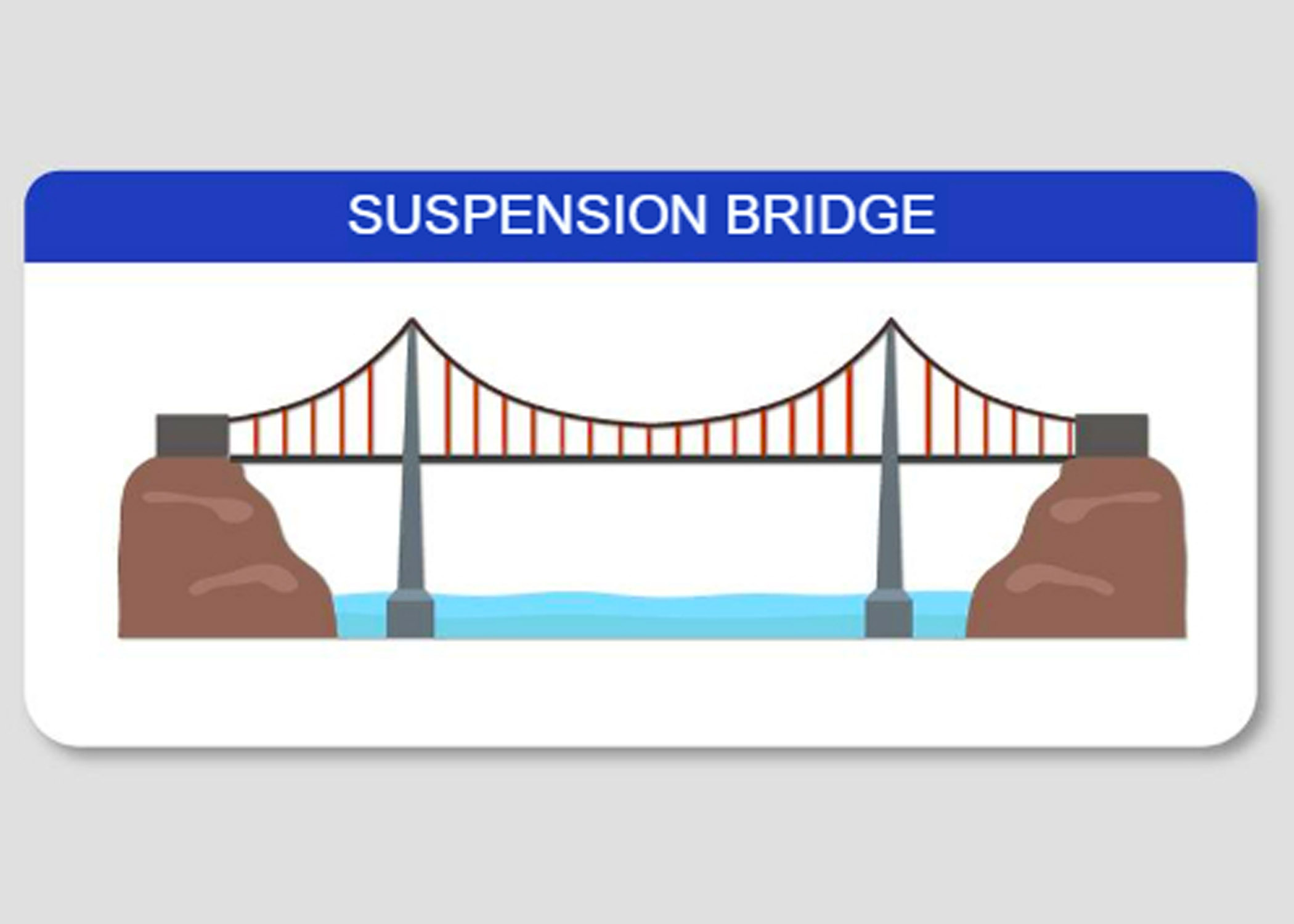
Design and Structure
Suspension bridges are constructed using a series of cables, typically made from steel, that are anchored at both ends of the bridge. These cables are then connected to the bridge deck, which is suspended in the air. The Golden Gate Bridge in San Francisco is one of the most famous examples of a suspension bridge.

Applications
Suspension bridges are ideal for spanning large bodies of water, such as bays and rivers. Their ability to support long spans without the need for additional support makes them well-suited for areas with challenging terrain or where unobstructed waterways are essential. However, suspension bridges can be expensive to build and maintain due to their complex design.
5. Cable-Stayed Arch Bridge
The cable-stayed arch bridge is a hybrid design that combines elements of both arch and cable-stayed bridges. It utilizes cables to support the bridge deck, while the arch provides additional stability and strength.
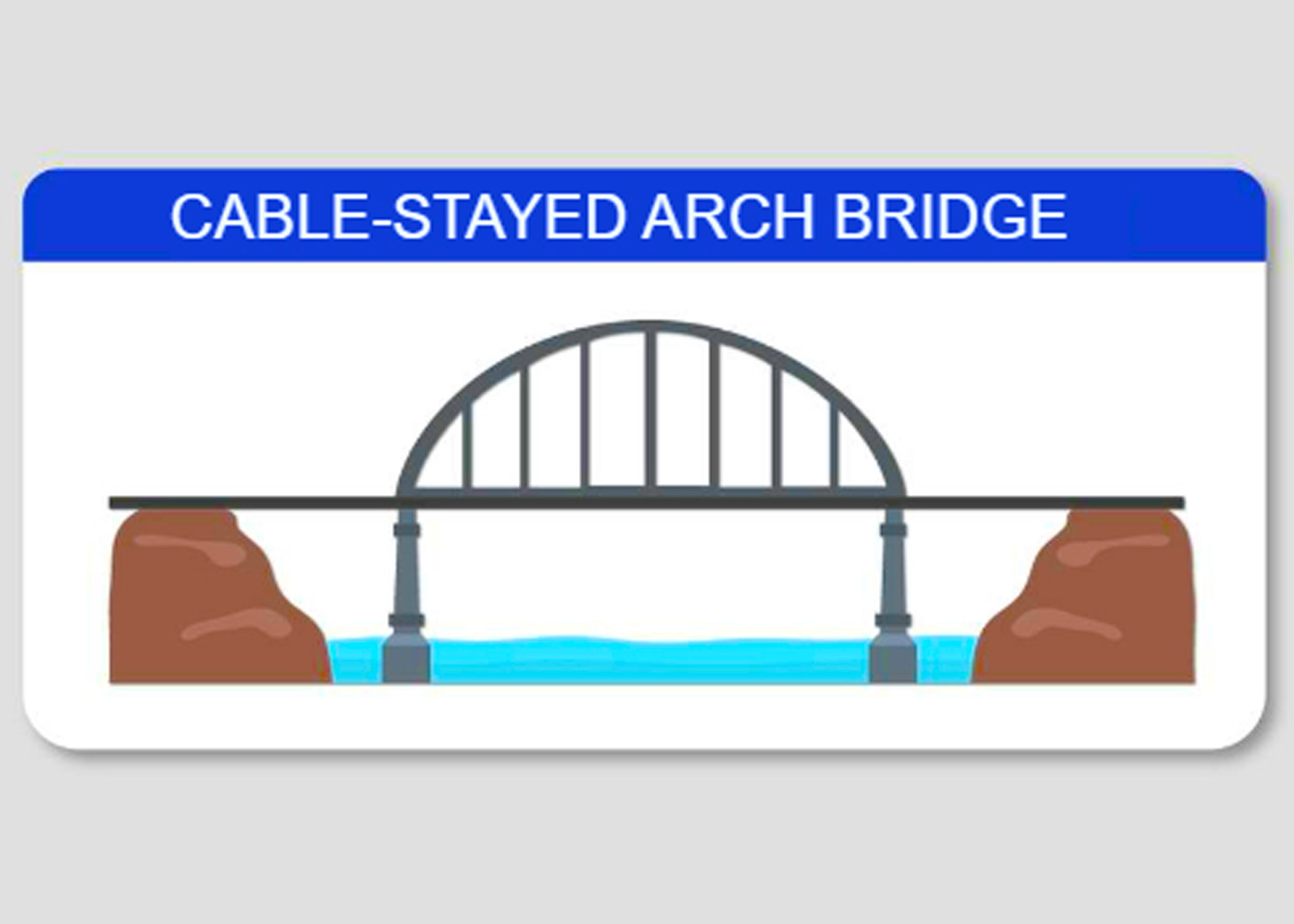
Design and Structure
In a cable-stayed arch bridge, the cables are attached to the top of the arch and extend downward to support the bridge deck. This design allows for a graceful, curved appearance while maintaining the strength and durability of a traditional arch bridge. The Lupu Bridge in Shanghai is a notable example of this type of bridge.
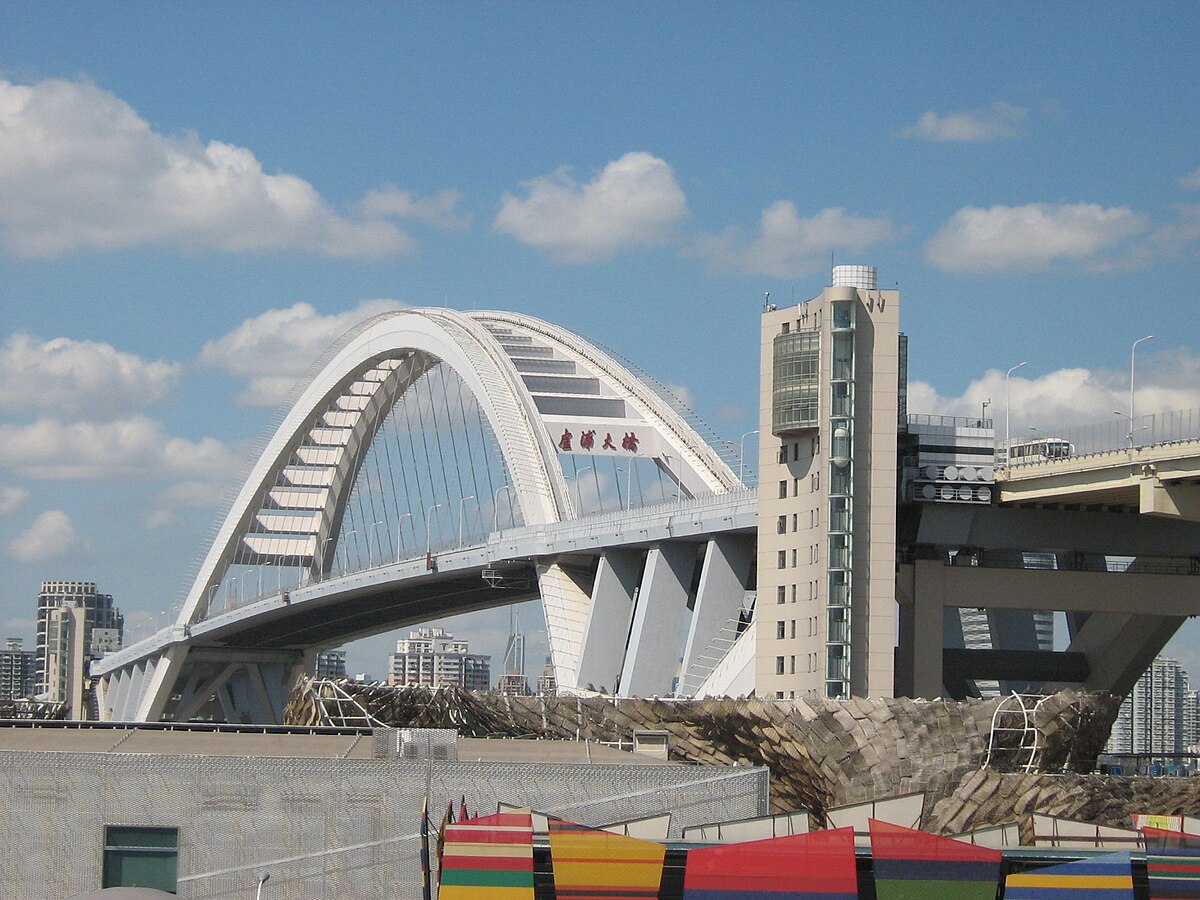
Applications
Cable-stayed arch bridges are often used in urban areas where aesthetics are a priority. Their unique design makes them ideal for spanning medium to long distances while providing a visually appealing structure. These bridges are commonly found in cities with significant traffic and pedestrian flow.
6. Cable-Stayed Bridge
The cable-stayed bridge is a modern bridge design that uses cables attached directly to towers to support the bridge deck. Unlike suspension bridges, where the cables run continuously between towers, cable-stayed bridges have individual cables connecting the deck to the towers.
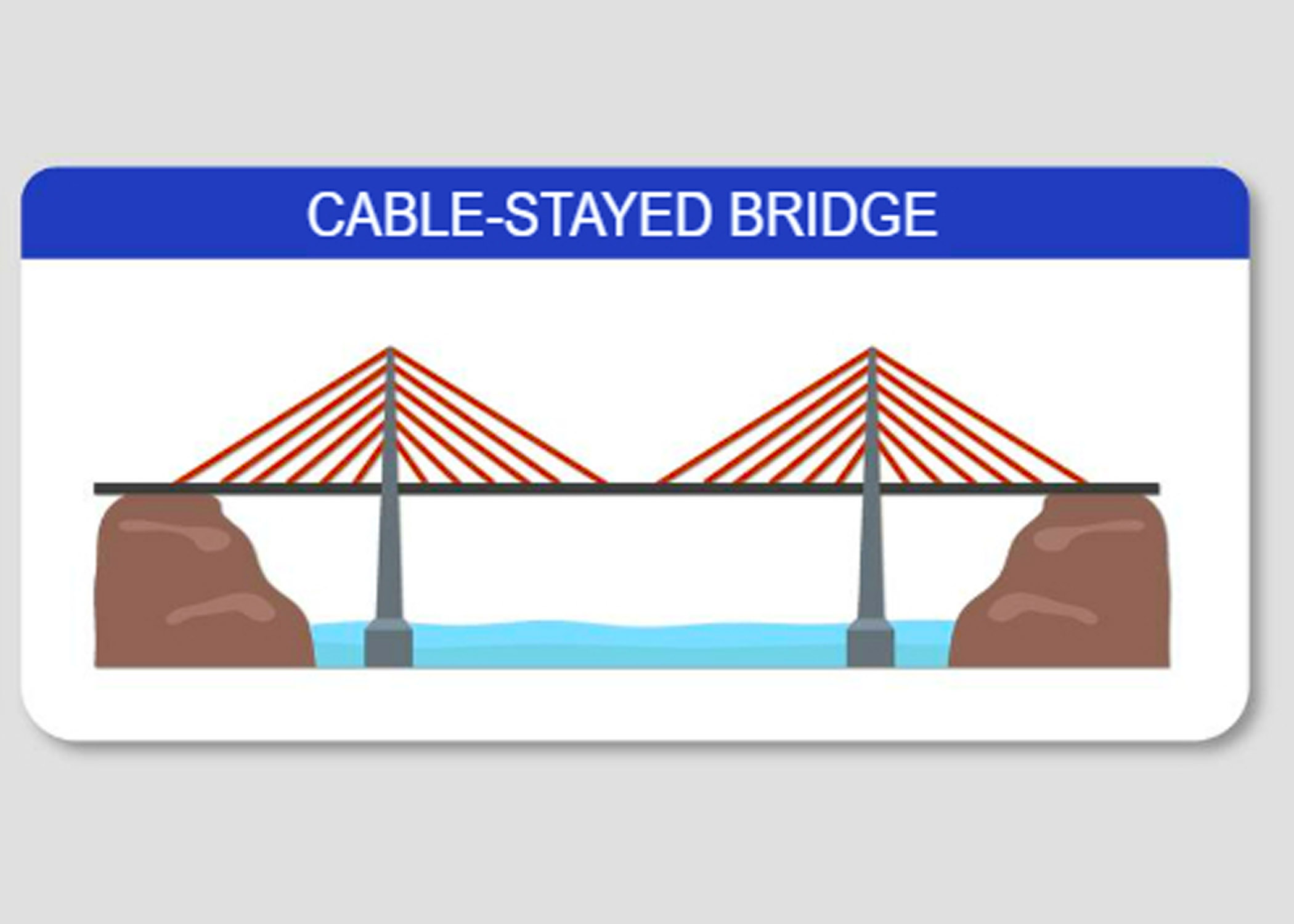
Design and Structure
Cable-stayed bridges typically feature one or more towers, from which cables fan out to support the bridge deck. The design allows for long spans without the need for multiple supports. Millau Viaduct in France is a famous example of a cable-stayed bridge.
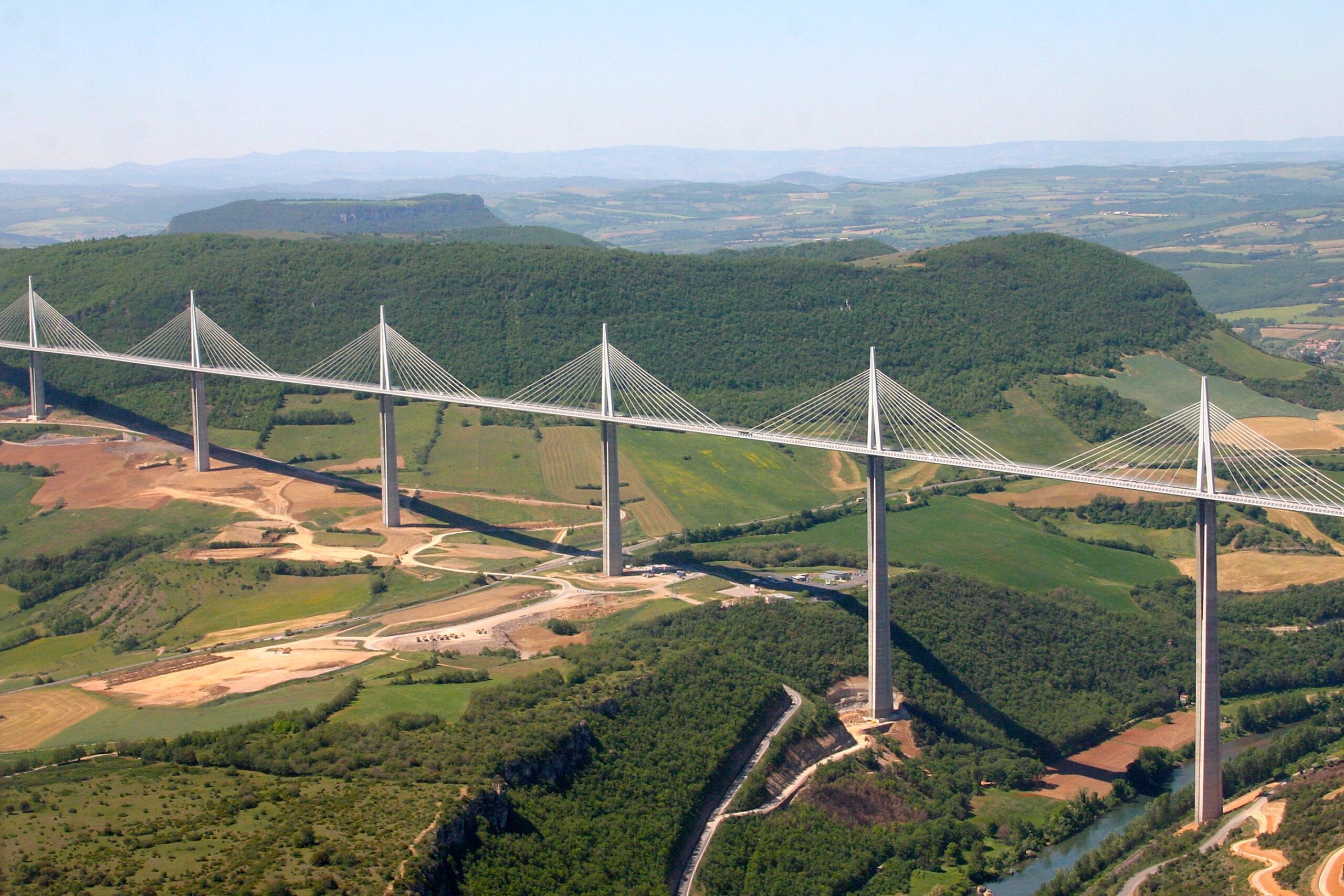
Applications
Cable-stayed bridges are commonly used for long-span crossings, such as river or harbor bridges. Their efficiency and relatively lower cost compared to suspension bridges make them a popular choice for modern infrastructure projects. These bridges are also favored for their ability to be constructed quickly and with minimal disruption to the environment.
7. Cantilever Bridge
The cantilever bridge is a unique type of bridge that uses projecting beams, known as cantilevers, to support the structure. These beams extend horizontally from a central support, allowing the bridge to span large distances without additional support.
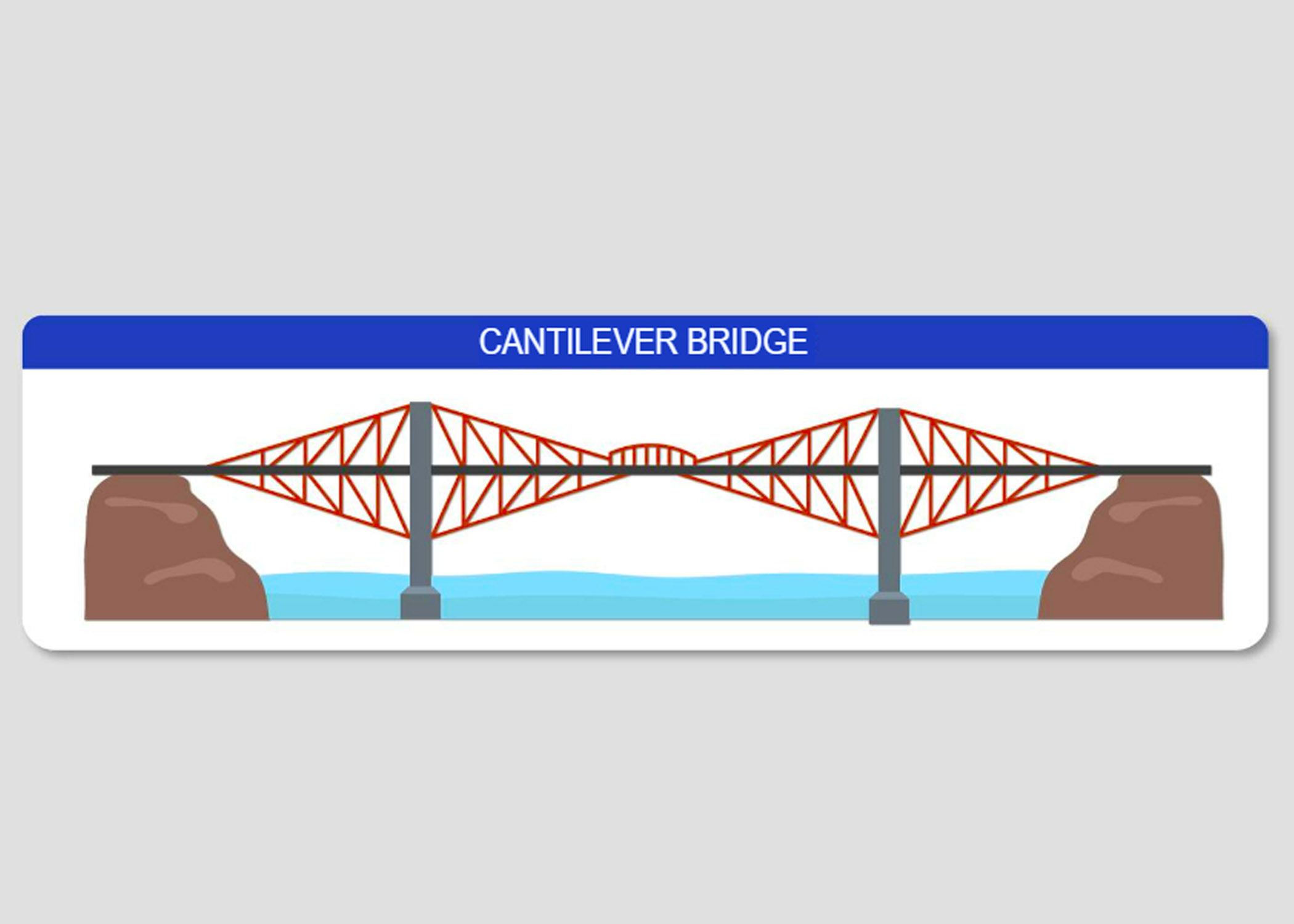
Design and Structure
Cantilever bridges are typically constructed using steel or concrete. The cantilevers are anchored at one end and extend out over the span, supporting the bridge deck. This design allows for long spans and the ability to handle heavy loads. The Forth Bridge in Scotland is a classic example of a cantilever bridge.
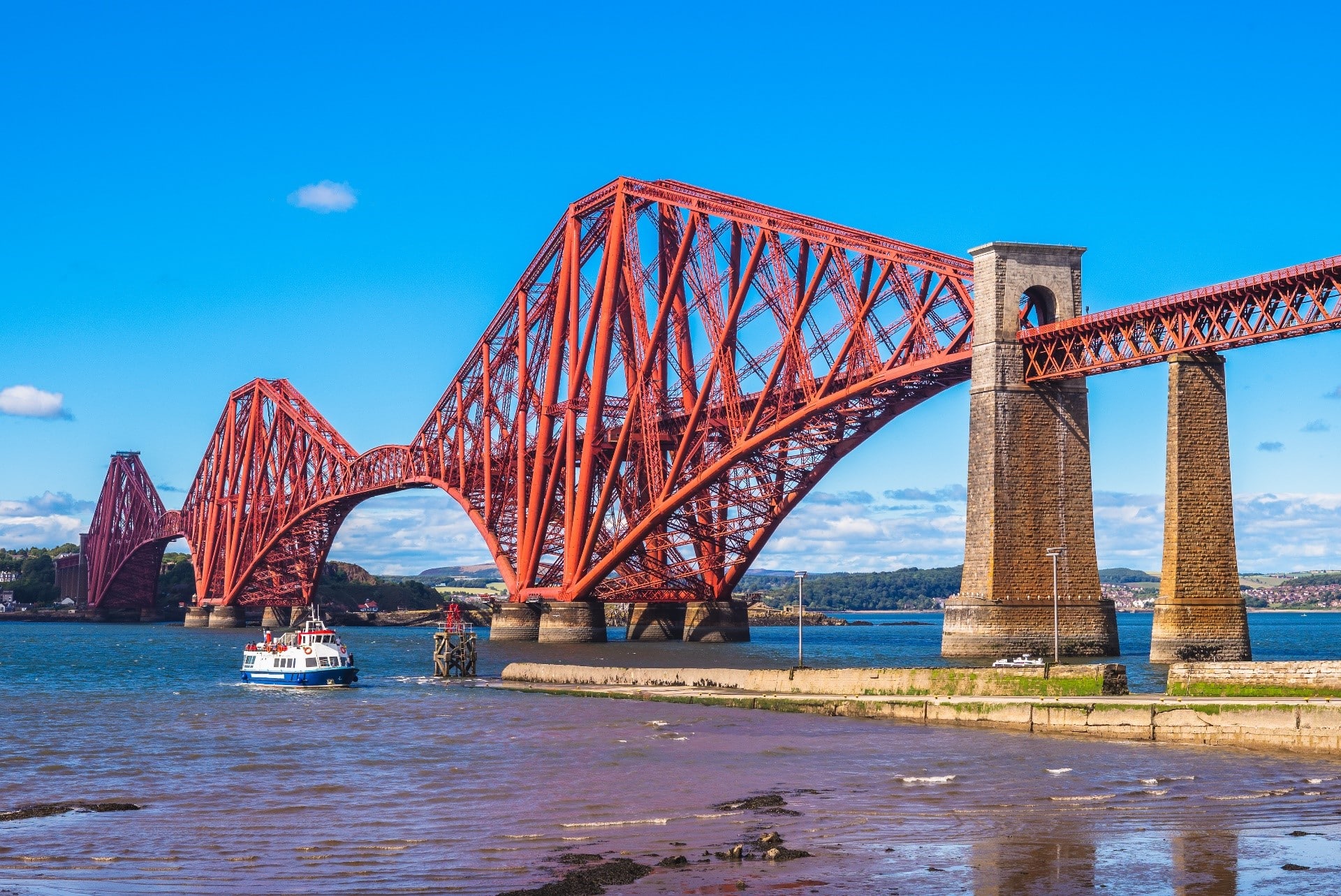
Applications
Cantilever bridges are often used where long spans are necessary, such as over wide rivers or deep valleys. Their ability to support heavy loads makes them ideal for railway bridges and other transportation infrastructure. However, cantilever bridges can be more complex and expensive than simpler bridge types.
